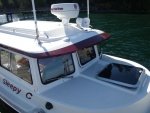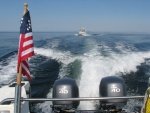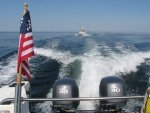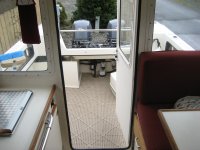I have a raw water washdown pump on my 22 Cruiser. The intake is through a grill, brass, just starboard of center and inches forward of the transom. There is a brass valve just above the sole.
I am considering taking out the grill and more importantly, the through hull in the bottom of my boat. I will probably keep the pump on board, and use a flexible hose that could be put overboard if I need to use the pump, Which I have not used more that half a dozen times in 10 years.
I have a concern with removing the through hull and valve. There is a wire attached to the valve. It appears to be a ground wire. Would this be a likely place for a common ground for the entire boat system? If so, what would be the next best place for that?
I do have trim Lenco tabs, stainless, and electric. Would that be a usable connection or would the outboard be a better choice?
Harvey
SleepyC :moon

I am considering taking out the grill and more importantly, the through hull in the bottom of my boat. I will probably keep the pump on board, and use a flexible hose that could be put overboard if I need to use the pump, Which I have not used more that half a dozen times in 10 years.
I have a concern with removing the through hull and valve. There is a wire attached to the valve. It appears to be a ground wire. Would this be a likely place for a common ground for the entire boat system? If so, what would be the next best place for that?
I do have trim Lenco tabs, stainless, and electric. Would that be a usable connection or would the outboard be a better choice?
Harvey
SleepyC :moon









